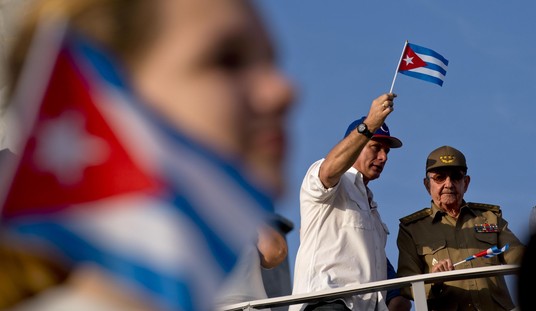So Bob Laszewski was right. Fully one-fifth of the new enrollment numbers that HHS has been waving around are bogus. Their target for the end of January was 4.4 million sign-ups; a few days ago, they told the country they’d made it three-quarters of the way there with 3.3 million. In reality, once the deadbeats are bounced from the rolls by their new insurers, they’ll be in the ballpark of 2.6 million, or 60 percent of their target. And that’s after HHS pressured insurers to extend the payment deadline from December 31 into January, hoping that a little more time for slackers would pad the enrollment figures even more.
Is it “only” 20 percent who haven’t paid, though, or is the actual number even bigger? The Times is guesstimating based on what they’re being told by different insurers, but read down into the piece and you’ll see that the biggest companies are seeing payment rates below 80 percent — another detail flagged by Laszewski when he wrote about this a few days ago. Eighty percent is probably the best-case scenario:
Matthew N. Wiggin, a spokesman for Aetna, said that about 70 percent of people who signed up for its health plans paid their premiums. For Aetna policies taking effect on Jan. 1, the deadline for payment was Jan. 14, and for products sold by Coventry Health Care, which is now part of Aetna, the deadline was Jan. 17…
Kristin E. Binns, a vice president of WellPoint, said that 76 percent of people selecting its health plans on an exchange had paid their share of the first month’s premium by the due date of Jan. 31. The company had received more than 500,000 applications for individual coverage through the exchanges in 14 states, she said…
One big company, Humana, said it had received 200,000 applications for insurance through the exchanges. “About 75 percent of the people paid, and 25 percent did not pay,” said Thomas T. Noland Jr., a senior vice president there. Customers had until Jan. 31 to pay for coverage that took effect on Jan. 1.
What’s the actual payment rate? If it’s 70 percent rather than 80, then suddenly we’re very close to HHS being only halfway to their 4.4 million target at this point.
At least one insurer has now extended the December 31 deadline for premiums to February 15 to delay having to cull their new ObamaCare-friendly consumer base for as long as possible. Note this bit too:
Mark T. Bertolini, the chief executive of Aetna, said last week that the company had 135,000 “paid members,” out of 200,000 who began to enroll through the exchanges. “I think people are enrolling in multiple places,” he said in a conference call. “They are shopping. And what happens is that they never really get back on HealthCare.gov to disenroll from plans they prior enrolled in.”
In other words, John Smith signs up for Aetna’s coverage on Healthcare.gov but waits before paying his first premium; then he sees a cheaper plan at Humana and signs up directly with that company, making his first payment on time. He’s paid up — but he’s still on the books at Aetna as a deadbeat. Or maybe he signs up for a different Aetna plan than he originally chose, leaving him with two separate accounts at Aetna and paid up on only one of them. However you slice it, there are bogus “enrollments” being counted by HHS that are going to end up being canceled soon. How many?
Here’s another data point from my pal Karl. Ask the state exchanges what sort of payment rates they’re seeing and some will tell you it’s a lot lower than 80 percent:
Washington and Wisconsin have reported that barely half of those signing up submitted payments. But the paying portion is 66% in Nevada, 80% in Vermont and 85% in Rhode Island.
Even if 85% were the national average, though, it would still cut ObamaCare’s paid enrollment by a half million to 2.8 million vs. a March 31 goal of 7 million.
It’s possible that paid enrollees represent an even costlier patient population than the updated national sign-up figures suggest.
That last bit is an excellent point. If you had to guess what sort of enrollee would be scrupulous about getting his first premium in on time, what would you guess? Would it be the “young healthy” who signed up on Healthcare.gov in December to keep his options open but who’s ambivalent about popping for coverage this year because he’s not earning much? Or would it be someone who knows they’ll need expensive medical treatment this year and wants to be absolutely certain that their coverage is in effect? In other words, not only are insurers going to have to thin their risk-pool herd for nonpayment, but it may be that young adults — the most prized of all enrollees — are a disproportionately large segment among the deadbeats. Which means the looming adverse selection problem is about to get worse, not better.
Oh, and by the way: The website still isn’t working for some people. Thus concludes HHS’s week of enrollment glory.








Join the conversation as a VIP Member